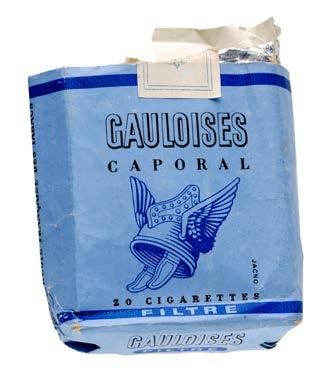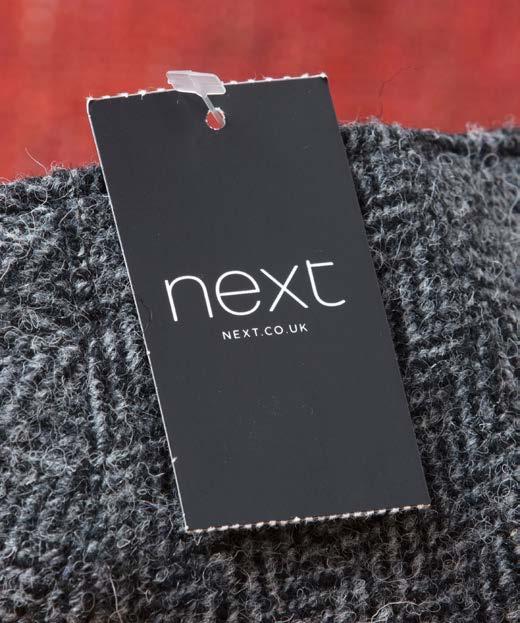






this market
Renewables
be enough to make you turn to
and utilities stocks crash on price cap plan
Home improvement market grinds to a halt as consumers retrench
UK fund outflows surge to £2.6 billion as investors take fright
Why Tesla faces a
to match high expectations in third
Shares publishes information and ideas which are of interest to investors. It does not provide advice in relation to investments or any other financial matters. Comments published in Shares must not be relied upon by readers when they make their investment decisions. Investors who require advice should consult a properly qualified independent adviser. Shares, its staff and AJ Bell Media Limited do not, under any circumstances, accept liability for losses suffered by readers as a result of their investment decisions.
Members of staff of Shares may hold shares in companies mentioned in the magazine. This could create a conflict of interests. Where such a conflict exists it will be disclosed. Shares adheres to a strict code of conduct for reporters, as set out below.
1. In keeping with the existing practice, reporters who intend to write about any
securities, derivatives or positions with spread betting organisations that they have an interest in should first clear their writing with the editor. If the editor agrees that the reporter can write about the interest, it should be disclosed to readers at the end of the story. Holdings by third parties including families, trusts, self-select pension funds, self select ISAs and PEPs and nominee accounts are included in such interests.
2. Reporters will inform the editor on any occasion that they transact shares, derivatives or spread betting positions. This will overcome situations when the interests they are considering might conflict with reports by other writers in the magazine. This notification should be confirmed by e-mail.
3. Reporters are required to hold a full personal interest register. The whereabouts of this register should be revealed to the editor.
A reporter should not have made a transaction of shares, derivatives or spread betting positions for 30 days before the publication of an article that mentions such interest. Reporters who have an interest in a company they have written about should not transact the shares within 30 days after the on-sale date of
We believe pure research and pure quality in our investment process leads to investment in its purest form. We are unconstrained by geography, sector or investment style – we invest where we see the best opportunities of the moment.

concentrated portfolio, holding just
25-35 stocks at any one time, enables us to analyse each company in exhaustive detail. Our in-depth, in-house research gives us the highest conviction in our investee companies. It is an approach which has one objective in mind – to deliver pure performance for our investors.
Diageo and Constellation Brands both delivered robust updates despite the weak consumer backdrop
We are staring down the barrel of a global recession, exacerbated by rising interest rates and that’s making life very difficult for consumer-facing stocks.
However, could the alcoholic drinks industry be an exception? History suggests this sector can be recession resilient. There is logic to this view. It may not be a happy fact but people facing increasing stress in their life are probably more likely to reach for the comfort of booze.
A study published by Oxford University Press in 2013 – Alcohol Use During the Great Recession of 2008–2009 by Jacob Bor, Sanjay Basu, Adam Coutts, Martin McKee and David Stuckler – showed that during the downturn which followed the global financial crisis overall levels of alcohol consumption in the US rose significantly despite the prevalence of alcohol use shrinking overall.
Recent updates from spirits maker Diageo (DGE) and US beer outfit Constellation Brands (CTX:NYSE) offer partial evidence of the resilience of the space this time round too.

On 6 October, Diageo, whose drinks cabinet includes Guinness as well as Johnnie Walker whisky and Smirnoff Vodka, reported a ‘good’ start to its current financial year (running to 30 June 2023) and continued to guide for profit to grow faster than sales in the medium term despite inflationary pressures.
Chief executive Ivan Menezes was quoted in trade website The Spirits Business as saying: ‘The trend of people drinking better has been in place for a long time. It’s not a recent trend, and even when you go back through old economic cycles –the global financial crisis for one – you saw a few quarters where that trend reversed a little bit, but it came roaring back.
‘I’d say the trend data is very reassuring because you can look at countries that have gone through shocks and come back from it. Now why is that the case, that is the question. It is because the category we are in is affordable luxury.’
If you look at the share price performance of Diageo between the start of 2008 and end of 2009 it was less volatile and didn’t fall as far as the wider FTSE All-Share index.
On 6 October, Constellation Brands, whose roster of brands include Corona beer, Casa Noble tequila and premium wine brand Meiomi raised the top end of its full year profit guidance after second quarter earnings beat forecasts.
Spirits, where Diageo is the world’s leading player, is an attractive area of the drinks market for several reasons. They aren’t particularly expensive to manufacture but they have strong brand loyalty and high selling prices. Consumption has been rising in the West but also in emerging markets, where an emergent middle class has a growing appetite for high-end drinks.
Shares in both Constellation Brands and Diageo are down about 12% year-to-date which suggest that investors are fretting about earnings. Perhaps they don’t need to worry as much?
By Tom Sieber Deputy EditorStocks and trusts with exposure to the renewables sector have taken a big hit over legislation to set a temporary cap on their revenue to help lower wholesale energy prices.
Announced on 11 October, the level of the cap is still a matter for consultation but had been expected to take a similar format to the one outlined by the European Union whereby non-gas generators must pay member states the excess
profit they generate above a threshold of €180 per megawatt.
UK-listed utilities were lower before the move was unveiled with Centrica (CNA), Drax (DRX) and SSE (SSE) all under pressure.
While there was some relief at the lack of any new windfall taxes when the Government’s energy plan was announced in September, that relief has ultimately proved short-lived.
Shares in renewables trusts had already suffered in the wake of mini-Budget thanks to the impact on discount rates of rising gilt yields.
Trust
Trust
The Renewables
Performance since miniBudget
Performance since miniBudget
Discount to net asset value
Discount to net asset value
There are two main components of discount rates. The risk-free rate which is typically the yield on gilts (UK government bonds) and the risk premium. The surge in the risk-free rate has resulted in falling net asset values.
The Renewables
Infrastructure Trust −17.8
Infrastructure Trust −17.8
Greencoat UK Wind −16.3
Currently, wind and solar farms built more than eight years ago can sell electricity at the market rate and still claim subsidies, while newer offshore wind projects are already governed by a contractsfor-difference system which limits the price they receive for their output.

Greencoat UK Wind −16.3
NextEnergy Solar −15.8
Bluefield Solar Income −13.2
NextEnergy Solar −15.8
Bluefield Solar Income −13.2
Foresight Solar −13.0
Foresight Solar −13.0
JLEN
JLEN Enviornmental Assets
Numis comments: ‘While uncertainty remains over a cap being introduced (and the duration, price limit and implementation challenges thereof) it is hard to see renewable investment company shares stage a sustained recovery, despite the attractive qualities of many business models.
Octopus
Enviornmental Assets
Renewables Infrastructure Trust −11.2
Octopus
Renewables Infrastructure Trust
Table: Shares magazine • Source: SharePad, AIC, performance data between close on 22 September and close on 10 October 2022, NAV data, close on 10 October 2022
Table: Shares magazine • Source: SharePad, AIC, performance data between close on 22 September and close on 10 October 2022, NAV data, close on 10 October 2022
‘Portfolios offer a mix of regulated (50% to 60%) and power price exposed revenues. Most funds operate effective hedging strategies, have healthy dividend cover ranging from 1.5 times to 3.8 times, relatively conservative balance sheets, and deliver important levels of investment which are key to achieving net zero carbon targets, and for delivering lower cost power to consumers over the long-term.’ [TS]
Recent trading updates from various builders’ merchants and building supplies companies suggest homeowners are no longer spending as freely on ‘doing up the house’ as they were during the pandemic.
When everyone was cooped up at home in the first half of 2020 with cash to spare and DIY stores were classed as ‘essential’ and were therefore allowed to open, spending on home improvement sky-rocketed even as overall spending declined.
However, rising food and energy costs together with higher mortgage costs means those who were saving for a new kitchen, bathroom or extension are now having to dip into their reserves just to keep the lights on.
On 7 October patio and paving firm Marshalls (MSLH) reported a sharp decline in sales to the home renovation and DIY market in the three months to September, sending its shares tumbling
16% to a five-year low.
The company said landscape product revenues slumped 16% in the third quarter compared with 1% at the half year stage due to ‘a marked softening of demand for private housing RMI (repair, maintenance and improvement) in both the UK and international markets’.
The latest government figures from the ONS (Office for National Statistics) show sales of DIY equipment including hardware, paint and glass have been falling for seven straight months in value terms despite much higher prices.
In its trading statement last month, home improvement retailer Wickes (WIX) confirmed it had seen ‘a softening of the DIY market’ over the summer, although it stuck to its sales forecast for the full year.

DIY rival Kingfisher (KGF) saw its revenues drop in the three months to mid-September but said sales of outdoor, kitchen and bathroom ranges at its B&Q stores had remained ‘resilient’.
Both firms expanded their DIFM (do-it-for-me) offering in kitchens and bathrooms as a means of generating extra income after the pandemic triggered a boom in demand for home improvements.
Builders’ merchant Travis Perkins (TPK) is due to update the market on current trading on 20 October.
In August, the firm warned that its Toolstation power tool and hardware business had seen a big drop in sales as the DIY market ground to a halt, so investors need to keep an eye out for this next update.
Kitchen specialist Howden Joinery (HWDN) is scheduled to publish its next trading update at the start of November.
In its update for the six months to 30 June the company talked up the market for UK kitchen and joinery products, but clearly the market has changed in the last three months and there is a risk the firm could disappoint. [IC]
UK All Companies sector hardest hit but inflows for mixed asset and fixed income products
According to figures from the Investment Association (IA), retail investors withdrew £2.6 billion from UK open-ended funds in August 2022 as the outlook for global economic growth continued to deteriorate, marking the seventh month of outflows this year.
August’s heavy selling by fund investors took total net outflows in 2022 to date to £14.6 billion, while the month’s worst-selling IA sector was UK All Companies, which experienced outflows of £772 million.
During the month, equity funds saw the largest net outflow, with almost £3 billion (£2.96 billion) withdrawn by investors, the highest monthly
outflow on record and the largest net outflow since the vote for Brexit in June 2016.
Investors yanked £1 billion out of UK equities and withdrew £828 million from global equities. Money market and property funds also experienced net outflows, although fixed income and mixed asset funds bucked the trend by enjoying net inflows. UK funds as a whole suffered net outflows for the thirteenth consecutive month.
Chris Cummings, CEO of the Investment Association, explained: ‘UK households are heading into a challenging autumn and winter and grappling with a cost-of-living crisis, which may have an impact on their ability to put money aside.
‘With market dynamics in a state of flux, we could see investors react to the surging yield on gilts and UK corporate bonds, or bide their time until we see a period of relative calm.’ [JC]
Slowing global growth and rising interest rates remain headwinds for electric vehicle giant
Since the start of the year analysts have upped their 2022 earnings forecasts for Tesla (TSLA:NASDAQ) by around 22% to $4.10 per share while 2023 EPS forecasts have shot up around 40% according to Refinitiv data.
Higher expectations against a backdrop of slower global economic growth could prove a high bar for Tesla when its reports third quarter earnings (19 October).
Recent news has been somewhat encouraging with Tesla sales breaking new records in China, selling 83,135 electric cars in September according to the China Passenger Car Association.
The numbers suggest an 8% increase from August and are above the prior June 2022 record of 78.906 vehicles.
However, record sales numbers are not always a good guide to earnings. Tesla also broke delivery
records in the second quarter but missed Wall Street earnings expectations.
Another factor for investors to juggle with is that Elon Musk has reversed tack on his attempts to wriggle out of buying Twitter (TWTR:NYSE) on the original offer at $54.20 per share. Twitter’s shares are up 55% from the lows in July.
This may prove a headache for banks which organized debt funding based on lower interest rates in April compared with prevailing rates today. According to Bloomberg, banks stand to lose as much as $500 million on potential writedowns. [MGam]
Shares is looking to run a series of articles profiling investors up and down the country
We will pay £50 in vouchers as a thank you to anyone whose story is published in the digital magazine. You can choose from a variety of shops and leisure companies including Marks & Spencer, John Lewis, Odeon, Primark, Wagamama and Pizza Express.
We are looking for volunteers to share their experiences of building and running a portfolio of stocks, funds, bonds or other asset classes.
You might have been investing for years with plenty of stories to tell about what went right or wrong with your investment decisions. Or you might be new to investing and are still finding your way around the investment universe. We’re interested in either of these situations.
Did you start investing during the pandemic? Are you retired and looking
to make your money last for years to come? Are you in your 20s or 30s and have just started to form an investing plan? Perhaps you’re in your 40s or 50s and still accumulating wealth?

We want to give any type of investor the chance to discuss why they are investing, what they hope to achieve, and why they’ve chosen certain stocks, funds or other investments so far.
Whether you’re going it alone, investing alongside your partner or perhaps as a member of investment club, get in touch if you’re happy to share some of your experiences.
Shares/AJ Bell does not provide advice or personal recommendation. The case study articles are for information only. You must do own research and consider your own personal circumstances before making investment decisions.
Subject to the terms below, the offer is to receive a £50 digital gift voucher when your experiences as an investor are published in Shares magazine (“Case study”).
The offer is open between 10 October 2022 and 30 September 2023 (“Offer Period”).
Payment is only made to case studies published in Shares magazine. Submissions do not guarantee your case study will be published. The Editor decides which case studies to publish and in which format.
You must be 18 or over and resident in the UK to qualify for the promotion.
Employees of AJ Bell (the publisher of Shares magazine), its affiliated companies, and the immediate families of any such employees are not eligible for the offer.
If your case study is published is valid, a link to download the voucher will be sent to your registered email address within 4 weeks of the article being published.
AJ Bell will not take any responsibility for your failure to supply accurate
information which affects acceptance or delivery of the offer.
Details about how we may process your personal information can be found here
We reserve the right to amend, suspend or withdraw the offer and/or these terms without prior notice and at our sole discretion by posting a notice on our website.
AJ Bell will not be held liable if any unforeseen event means that we are unable to fulfil this offer. In this event, no compensation will be payable by us.
By making a claim in the offer, you
are deemed to accept the terms and conditions of our digital gift voucher partner.
The offer is non-exchangeable, nontransferable and no cash alternative is offered.
By participating in the offer, all claimants are deemed to accept these terms and conditions.
The Promoter of this offer is AJ Bell. The Promoter’s principal place of business is at 4 Exchange Quay, Salford Quays, Manchester, M5 3EE. The Promoter may exclude from participation anyone who we believe to be taking unfair advantage of the offer.
Market share gains and a multi-year share buyback among the many reasons to buy the Davidoff cigarettes-to-blu vapour device maker


(IMB) £20.19
Market cap: £18.9 billion
Shares in Imperial Brands (IMB) have lit up the market year-to-date, rising 25% to trade at a multi-year high of £20.19 with outperformance of the FTSE 100 reflecting the cigarettes-to-vaping company’s prized defensive qualities during uncertain times for equity markets and the global economy alike.
Yet based on investment bank Bank of America’s forecasts for the year to September 2024, Imperial Brands trades on just 6.7 times earnings and offer a dividend yield of 9%, metrics which scream there’s cracking value on offer here.
Smoking and vaping are addictive, giving the globe’s fourth largest tobacco player formidable pricing power, but they are also very unhealthy habits, which means the shares possibly won’t appeal to investors who place heavy emphasis on ethical considerations.
Nevertheless, the Bristol-headquartered consumer products firm is a compelling investment solely from a total returns perspective. Imperial Brands is generating so much surplus cash that it is going to return more than £2.3 billion of it to shareholders through dividends and share buybacks in the year to September 2023.
That’s equal to over 12% of the current market capitalisation, whilst continuing to invest in the business to ensure it remains competitive in the future. A key catalyst for further upside as investors are drawn in and the lesser share count enhances
earnings per share, the buyback also demonstrates that despite this year’s gains, management led by highly regarded CEO Stefan Bomhard still believes the shares represent great value.
For the uninitiated, Imperial Brands produces and markets cigarettes, cigars and rolling paper with brands including Davidoff, Gauloises, West, Winston, John Player Special and Lambert & Butler in cigarettes, as well as Rizla rolling papers and Backwoods cigars, not to mention an exciting portfolio of next-generation products (NGP) such as the Pulze device and iD sticks, which make up its heated tobacco offering, and the vape brand blu.
The £18.9 billion cap’s products are bought in high volumes on a regular basis by millions of people around the world, creating steady cash flows, while demand for cigarettes tends to be inelastic – demand doesn’t change in response to rising prices. Combined with consolidated structure of the tobacco industry, this confers pricing power on the business.
Imperial Brands’ shares puffed higher following a reassuring trading update (6 October) covering the year to September 2022 which confirmed the
tobacco titan is on the right track to improve its underlying business. In line with previous guidance, Imperial Brands said it expects full year net revenue and adjusted operating profit to both grow by around 1% at constant currency.
Guided by Bomhard, Imperial Brands reported improved market share in its top five combustibles markets (US, UK, Germany, Spain, Australia), which speak for about 70% of the group’s operating profit. And at constant currency, the growth rate of Imperial’s tobacco sales actually improved in the second half compared with the first, driven by a stronger price mix.
In the NGP business, the future growth engine which includes vapes, heated tobacco and oral tobacco, Imperial Brands flagged encouraging market share gains in the Heat Not Burn category in Greece and the Czech Republic as well as a launch in Italy, Europe’s largest heated tobacco market. The company also highlighted positive results from a consumer trial of blu 2.0, a new pod-based vapour device, in France.
But the big news from the statement was the start of an ‘ongoing, multi-year’ share buyback programme, starting immediately with a bumper £1 billion buyback over the next 12 months to September 2023. This lavish return of capital, on top of the ordinary dividend, is being made possible thanks to the group’s strengthened
balance sheet and a leverage ratio that is now at the lower end of management’s two to two and a half times net debt to EBITDA target.
Bomhard insisted the new buyback is ‘underpinned by this improving performance and our confidence in being able to continue generating strong cash flows to support growing shareholder returns in the years to come. We are committed to a progressive dividend and an ongoing buyback programme to meaningfully reduce the capital base over time’, he enthused.
Modelling an earnings per share-enhancing £3 billion share buyback over the next three years, Bank of America believes the company can ‘unlock significant value by pulling the right levers by refocusing its tobacco business, stepping up support behind Heat Not Burn and delivering efficient capital allocation’.
This provider of maritime security now has the wind in its sails
It has been a long time coming but maritime identification and tracking technologies kit supplier SRT Marine Services (SRT:AIM) is finally reaping the benefits of years of investment in its products and systems.
In a recent trading update, the firm revealed revenue for the six months to 30 September had jumped 300% to £18.8 million and pre-tax profit for the period would be more than £1.5 million.
The key to this remarkable growth was the systems business, which delivered ‘multiple operational and several revenue milestones’ during the half and delivered £13.6 million of revenue against £0.5 million the same time last year.
Not unreasonably, the shares cruised 18% higher to 31.75p on the day of the announcement but the good news is they haven’t sailed off into the sunset yet.
Chief executive Simon Tucker – who was flying to foreign shores to seal yet another deal as he spoke to Shares recently – describes SRT as providing ‘the equivalent of air traffic control for the seas’.
The firm introduced the first ‘black box’ for marine traffic 20 years ago and has an 85% market share of the installed base, which is growing at a 25%-plus compound annual growth rate.

As well as manufacturing the equipment itself at its facility near Bath, the company owns all the technology and IP (intellectual property) rights to its products.
It sells mainly to the Middle Eastern and Asian markets, with customers ranging from national defence agencies and coastguards to port owners and leading systems integrators.
One of the biggest markets for its products is among fishing fleets, which are heavily regulated in terms of where they can operate and what they can catch.
As well as tracking individual vessels the technology can be used to identify possible threats, monitor infrastructure such as buoys and underwater cables, manage traffic on busy waterways, help search and rescue teams and assist in accident investigation
Contracts can be worth up to tens of millions of pounds, and the firm has a sales pipeline of £600 million with Tucker promising to provide ‘further market updates with our continued progress’ suggesting the second half will also show a significant increase in revenues.
We should stress that as a small, AIM-quoted company, the market in SRT shares is not very liquid and as an investment it is only suited to those with a long-term horizon and an appetite for riskier stocks. [IC]























High market volatility creates more opportunities for Merchants’ disciplined long-term investment process
Loss to date: 6.9%
Original entry point: Buy at 531p, 30 September 2021
While the shares of Merchants Trust (MRCH) have slipped below our entry price from September 2021, the trust has continued to add to its long-term track record of market outperformance despite the trickier market conditions which have prevailed in 2022.
The trust delivered a marginally positive first half to 31 July with an NAV total return of 1.3%, ahead of the market return of -0.1%. The outperformance was driven by stock specific factors rather than the choice of sectors. The biggest positive contribution came from
household repair and improvement services company Homeserve (HSV) which received a private equity takeover approach at a large premium to the share price.

Merchants said it has seen several such takeovers in recent years reflecting the extent to which fundamentally sound UK businesses ‘continue to trade at cheap valuations.’
Looking forward manager Simon Gergel said he believes investors have priced in ‘considerable uncertainty’ particularly in cyclical sectors.
Consequently, while many defensive sectors continue to provide a firm foundation for the portfolio, Gergel has been building positions in an increasing number of cyclical businesses which offer ‘compelling long-term value’.
Gergel acknowledges it may take some time for value to be recognised in market conditions which highly sentiment driven.
A key part of Merchants focus is on paying a high and rising dividend. The board recognise the importance of providing a steady income as well as the compounding effects of reinvesting income into more shares.
Dividend champion Merchants has raised its dividend for the last 40 consecutive years.
For the first half of the 2023 financial year the aggregate dividend has been increased by 0.7% to 13.7p per share.
Market uncertainty and investor skittishness is providing increased opportunities for Merchants to find mispriced shares, while the 5.7% dividend yield is supportive, so we remain positive. [MGam]


W hether it ’s in S o u th A frican minin g, Indian financial s er v ice s or Chine s e infra s tr u c ture, we know w here to find op p or tunitie s hid den w ithin emergin g m arket s Fidelit y Emergin g M arket s Limite d uncover s gre a t comp anie s thro u gh o ur ex p erience d glob al te am, b a cke d by w ha t we b elieve are unri valle d on the gro und re s e arch cap abilitie s . M e anin g yo u can m ake the m o s t of o ur ex ten si ve ex p er ti s e, w itho u t le arnin g a w hole new l an gu a ge Pa st per formance is not a guide to future returns. The value of investments can go down as well as up, so you may get back less than you invest. Overseas investments are subjec t to currenc y fluc tuations






Investments in emerging markets can be more volatile than other more developed markets. The Company uses financial derivative instruments for investment purposes, which may expose it to a higher degree of risk and can cause investments to experience larger than average price flu c tuations






To find out more, visit fidelity.co.uk /emergingmarkets, scan the QR code or speak to your adviser.

There is an old saying that no-one rings a bell when the market is at the top, but by the same token neither is there a clearcut signal to buy when markets reach the bottom.
Yet after a brutal year for stocks – and a particularly tough third quarter – it is beginning to feel as though the worst of the sell-off is in the rear-view mirror and investors should be looking for bargains.
However, if we are wrong and there is more selling to come it’s worth asking where should investors hide until it’s time to dip a toe back in?
While global stocks are undoubtedly cheaper than they were 12 months ago, we know by now that valuation on its own isn’t enough to spark a rally.
UK stocks especially have looked cheap relative to the rest of the world for several years, but that hasn’t prevented the market from staying cheap.
Investors need to take their lead from one
By Ian Conway Companies Editorof the following scenarios, or preferably all three: better corporate earnings, a sign that interest rates have peaked and evidence of falling inflation.
Second-quarter aggregate earnings for the S&P 500 index rose a better than expected 6.2% with over 70% of companies beating estimates, while revenues grew by 14% against initial forecasts of 10% according to US firm LPL Financial.
‘Earnings growth of 6-7% doesn’t sound very exciting but given the challenges corporate America has faced we consider the second quarter earnings season a resounding success’ says Jeffrey Buchbinder, LPL’s chief equity strategist.
‘The numerous challenges last quarter included


a slowing economy, intensifying inflation pressures, ongoing global supply chain disruptions, and a surging US dollar. Still, corporate America delivered the type of upside investors have grown accustomed to in much easier economic environments.’
As we enter the third quarter reporting season, earnings forecasts have been cut to just a rise of 3% to 4% which suggests there is scope for another round of positive surprises, while fourth quarter earnings are seen rising by between 5% and 6% which is also fairly pedestrian.
‘Using history as a guide, seasonal forces and the mid-term elections should provide a fourthquarter tailwind’, says Buchbinder, although in the short term ‘the market’s direction will likely depend on when the Fed (US Federal Reserve) signals its rate hiking campaign will end’, he adds. A hotter than expected September jobs report (7 October) dashed hopes of an early pivot by the Fed.
However, any sign that the Fed is thinking about cutting rates earlier will send stocks roaring back up again.
1Q 2020
2Q 2020
3Q 2020
4Q 2020
1Q 2021
2Q 2021
3Q 2021
4Q 2021
1Q 2022 9.2%
2Q 2022
3Q 2022E
November 2, 2022
December 14, 2022
February 1, 2023
March 22, 2022
May 3, 2023
June 14, 2023
July 27, 2023
September 20, 2023
November 1, 2023
December 13, 2023
January 31, 2024
Data
As it stands, investors are expecting US interest rates to peak at around 5.75% next March and stay there for about six months before gradually easing to around 4.5% by early 2024, according to Bloomberg’s WIRP (World Interest Rate
4Q 2022E 6.1%
Data correct as of 26 August 2022
Shares magazine
FactSet,
That is because the market is a discounting mechanism so a change in consensus expectations of when the Fed will ‘pivot’ and start lowering rates will be factored into valuations very quickly.
The last piece of the puzzle is a fall in headline inflation, which already looks to be under way as supply chain pressures ease along with global freight rates and core goods prices decline.
Oil prices have come down and, despite the recent decision by OPEC+ to reduce production, the base effects of last year’s higher energy prices will start to have a bigger influence on current inflation.
More importantly, the dash to replace Russian gas has resulted in European reserves standing at 90% of capacity which combined with a 10% drop in consumption means the upward pressure on prices should ease.
Stephen Anness, manager of the income-focused
Invesco Select Trust - Global Equity Income (IVPG), says he has been ‘eyeing up’ housebuilders and carmakers.
‘To buy them now would be a contrarian move’, admits Anness, ‘but with yields of 7% these sectors are beginning to look enticing within a balanced portfolio.
‘If you have companies on sensible valuations paying a dividend and still growing quickly, then a few lowly-valued companies paying a high income can be attractive – as long as you are confident of being paid. That is the crucial issue.’
Stephen Snowden, head of fixed income at Artemis Investment Management, believes the recent spike in UK gilt yields following the ‘mini budget’ makes this a good time to look at UK corporate bonds.
‘Calling the bottom in markets is simply not possible, but the current yields are big enough to start buying if you are investing with a medium-tolong-term mindset.
‘The UK corporate bond market now yields 6.7%, and it is highly unlikely inflation will stay above that level for long. There is uncertainty ahead, but bargains are never found on sunny days.’
Given the size of the pull-back in the S&P 500 index in the US, investing in an ETF (exchangetraded fund) is probably a good idea if markets are about to rally.
One of the most popular ETFs is the iShares Core S&P 500 (GSPX), which is priced in sterling, while a more nuanced way to play a US rebound is through the equally-weighted Xtrackers
S&P 500 Equal Weight Fund (XDWE) which is also priced in sterling but as its name suggests gives each stock an equal weighting to avoid concentration risk.
The flip side of the coin – and the cue to be under-invested in stocks until the evidence proves otherwise – is a combination of bad economic news and central bank policy.
While traders and investors continue to search for clues as to when US monetary policy will ease, the central bank has tried its best to make it clear it is determined to ‘get rid’ of inflation by keeping rates higher for longer.
The outcome of this policy is likely to be that less liquid and less well-run companies get pushed into default, which will have a knock-on effect on equities, none of which seems to be factored into markets right now.
In a speech in September 2022, New York Fed chair Jerome Powell made the following comments: ‘We have to get supply and demand back into alignment and the way we do that is by slowing the economy. That’s going to take tight monetary policy for a period of time.
‘Higher interest rates, slower growth, and a softening labor market are all painful for the public, but they’re not as painful as failing to restore price stability and then having to come back and do it.
We want to act aggressively now and get this job done and keep at it until it’s done.’
Reinforcing that message, Atlanta Fed president Raphael Bostic said last week in a speech titled ‘Staying purposeful and resolute in the battle against inflation’:
‘There could be short-term pain. That may be the unfortunate cost of reducing inflation. Yet failing to restore price stability now would only lead to worse suffering later.
‘If economic conditions weaken appreciably – for example, if unemployment rises uncomfortably – it will be important to resist the temptation to react by reversing our policy course prematurely.’
This brings us to the second major risk to markets, that inflation – which is at 40-year highs in many countries – remains ‘sticky’ even though on the face of it prices seem to be falling.
and fossil fuels are phased out.
Sadly, as the saying goes, the cure for high prices is high prices, meaning we get to a point where people and companies simply stop spending and the economy goes into a recession, which by its nature will be disinflationary.
A third factor which could hamper a recovery in markets is the replacement of QE (quantitative easing) with QT (quantitative tightening).
After a decade of worrying about a lack of inflation, which prompted ultra-low interest rates and unconventional central bank intervention every time there was a wobble in markets (the ‘bad news is good news’ scenario), now we are worried about prices rising too fast.
Instead of central banks expanding their balance sheets, and asset prices rising in response – a regime which a generation of traders have become conditioned to and know nothing else – we are moving to a world of liquidity being withdrawn from markets.
Anyone who thinks QT will be painless and is already priced in by markets only needs to look at the mild operation undertaken by the Fed between 2017 and 2019 to see that the effects of withdrawing liquidity are aysmmetrical as bad news becomes plain old bad news again rather than good news because it will lead central banks to turn on the liquidity taps again.
The classic hiding places during a sell-off are capital preservation funds such as Ruffer Investment Company (RICA) and Personal Assets Trust (PNL), while for investors with more of a risk appetite the Argonaut Absolute Return Fund (B7FT1K7) managed by Barry Norris has shown itself to be a strong performer in weak markets.
Unfortunately, while the primary causes of inflation may start to fade there are now secondary sources of inflation which are the result of ‘reflexivity’, a concept discussed by financier George Soros in his book The Alchemy of Finance.

In the case of inflation, ‘reflexivity’ means the initial shock of higher food and energy prices is replaced by a response from producers and consumers leading to higher prices for things like services and rent.
There is also a possibility of persistent ‘greenflation’ due to the energy transition as more expensive renewable energy sources are brought in
The ultimate safety play is to sit in cash or a cash equivalent. When interest rates were close to zero there was no benefit to holding cash, and while inflation was rising its value was being eroded, but with rates heading ever higher investors are beginning to treating it as an asset class in its own right.
Some deposit accounts are offering upwards of 4% which is better than the yield on some stocks without the risk of capital loss.
Even Ray Dalio, the founder of investment giant Bridgewater Associates, has recently rowed back on his long-held view that ‘cash is trash’.
Temple Bar Investment Trust is a well-established investment company with a disciplined, value-oriented investment approach. Managers Nick Purves and Ian Lance have more than fifty years of investment experience between them and are focused on investing the Temple Bar portfolio in businesses that they believe are available at a significant discount to intrinsic value.
This discipline is known as value investing, and it has a very long history of outperformance. More recently, however, it has struggled in the growth-dominated markets of the last decade. Many investors have abandoned the approach as a result, but recent market behaviour suggests value investing may be resuming its former dominance.
The Temple Bar Investment Trust is well placed to benefit from a continued rotation into UK value stocks. That’s why, if you want to gain exposure to the UK value opportunity, you should consider Temple Bar.

For further information, please visit templebarinvestments.co.uk
No investment strategy or risk management technique can guarantee returns or eliminate risks in any market environment. Investments can go up and down in value and you may not get back the full amount invested. The information shown above is for illustrative purposes only and is not intended to be, and should not be interpreted as, recommendations or advice. RWC Asset Management LLP is the appointed portfolio manager to the Temple Bar Investment Trust Plc, and is authorised and regulated by the Financial Conduct Authority.
“UK stocks look attractively valued in a global context and when compared to history. We believe that recent market behaviour suggests the stars are aligned for an improvement in the performance of value stocks in the years ahead. Timing such a change in market conditions precisely is always difficult, but the long-term opportunity for UK value investors is significant.”
Ian Lance, Portfolio Manager, Temple Bar Investment Trust
Brown Advisory US Mid Cap Growth has been taking advantage of opportunities while stocks are down
Having launched in April 2017, Brown Advisory US Mid Cap Growth Fund (BYW8R75) was in the top 25% performers in the Investment Association North American sector for the first three years of its existence. Then came a big shift in the market and it tumbled along with most other growth funds.
Despite having the wind knocked out of the fund’s sails, portfolio manager George Sakellaris remains remarkably upbeat about its prospects, albeit acknowledging that we’re still in a difficult environment.

The fund invests in US-listed stocks worth between $2 billion and $50 billion. While UK investors may only be familiar with a few of its holdings such as Chipotle Mexican Grill
(CMG:NYSE), most of them are characterised as high-quality businesses.
In dollar terms, Brown Advisory US Mid Cap Growth generated a 134% total return between launch and 1 November 2021. That’s a remarkable return for investors over four and a half years and shows you what’s capable from investing in medium-sized companies. In contrast, the S&P 500 index of large cap companies returned quite a bit less at 107% over the same period.
In November 2021 a surge in interest rate expectations caused the market to rotate away from growth stocks to value ones. Funds like the one from Brown Advisory saw a big sell-off as investors were no longer prepared to pay high earnings multiples to access companies with higher than average growth prospects. They would rather pay a low multiple to invest in companies already making good money now, even though their earnings growth prospects were slimmer.
Brown Advisory US Mid Cap Growth fell 32% in dollar total return terms between 1 November 2021 and 6 October 2022, nearly twice as bad as the S&P 500’s 18% decline.
‘It’s been quite an extraordinary period,’ says Sakellaris. ‘I started my career at the height of the dotcom bubble and then my earliest years were in the bust of that. I never felt I would see something similar again, yet parts of 2020 and 2021 were a small echo of that.’
They often have a better opportunity to grow and take market share than large companies
They have an advantage over small companies because they’ve had time to mature and scale up, so they are usually more profitable
They often have professional management teams and better board structures than smaller companies
Before November 2021’s market rotation, the valuation of many growth stocks became excessive. Sakellaris says the Russell Mid Cap Growth index hit 41 times earnings in 2021. The only time in its entire history that it traded even higher was March 2000 at 55 times earnings, he adds.
Undeterred by the portfolio performance going into reverse, the Brown Advisory team sought to scour the market wreckage for opportunities. Quite a few high-quality businesses were suddenly available on much more reasonable valuations, so the team started buying.
One stock they seized upon was payroll software group Paycom (PAYC:NYSE) after its share price nearly halved in less than a year. It is taking market share from leaders Automatic Data Processing (ADP:NASDAQ) and Paychex (PAYX:NASDAQ), enjoying a 26% annual compound growth rate in sales and 23% in net profit, according to Stockopedia data.
It is also a beneficiary of rising interest rates because of the float (made up of client payroll funds) which is typically held for a period after receiving the cash from clients and before salaries are paid.
The fund has reduced its exposure to consumerfacing companies quite a bit since 2021 after seeing cracks appearing. Some holdings have been sold, while a few new positions have been taken.
‘About a year ago we started to have conversations that worried us about the low to middle income consumer in the US. We were lapping a lot of stimulus payments, child tax credits and other things that helped the consumer during the Covid bubble and which distorted demand.
‘We started to see the other side of that, such as a build-up in inventory and cracks in the credit quality of sub-prime consumers. When we see things like that, our one, two and three-year projections for companies change.’
It sold a stake in craft products website Etsy (ETSY:NASDAQ) while the share price was high, and it also exited a position in SiteOne (SITE:NYSE). This was a classic Covid beneficiary, supplying landscape products and seeing demand soar as people stuck at home sought to spruce up their indoor and outdoor living space.
Home improvements are now going into reverse as households cut back on their spending – after all, a new driveway or a pool is an easy decision to kick down the road. Nice to have, but not essential in darker times like now.

‘SiteOne had price and volume growth and the shares traded well above 20 times earnings before interest, tax, depreciation and amortisation. We then started to exit, and I think you’ll now see its product price and volumes go negative.’
The shift in consumer spending behaviour that we’re now seeing has prompted the Brown Advisory fund to take two new positions in what
Sakellaris calls ‘counter-cyclical’ companies.
First is Dollar General (DG:NYSE) which at $54 billion is on the larger side of what you would typically find in the fund. It sells consumer staples to people on mid-to-low incomes. ‘When budgets come under pressure, this group of people trade down and seek out smaller basket and product sizes – that’s what Dollar General specialises in.’
It seems an obvious stock to own in the current environment, yet Sakellaris says this hasn’t seen investors bid up the valuation to excessive levels. ‘The valuation is fair. We think things will accelerate within the business.’
One stock that was certainly going cheap when the fund took a position this year was Five Below (FIVE:NASDAQ), a US business with a lot of similarities to UK retailer The Works (WRKS). Both sell cheap items including the latest playground craze such as fidget spinners or Squishmallows. Sakellaris says going into its stores is like a treasure hunt for teens and tweens, where $5 or $10 goes a long way.
‘Five Below has company-specific initiatives that could get same store sales growing again after a period of being up and down. It still has the opportunity to triple stores in the US.’
Many investors associate growth funds with taking higher risks, yet Brown Advisory US Mid Cap Growth has a more conservative approach, insists Sakellaris. It isn’t chasing ‘story stocks’ where there is a good narrative about what a company does and typically no sign of profits for many years ahead. Instead, it prefers to invest in high-quality
businesses with good management teams and where growth durability is more important than the actual rate of growth. ‘We want growth to stay stronger for longer.’
A stock that ticks all these boxes is Waste Connections (WCN:NYSE), the biggest position in the fund. ‘The people operating the company have a stellar 20-year history of capital allocation. They’ve rolled up a fragmented industry in waste collection over many years. They’ve done it in a very profitable way with better return on capital and margins than peers.’
In October 2002, Waste Connections’ shares traded at $6.63, according to Google Finance. Today they’re at $131.99 which equates to a 1,890% return over 20 years.
Earnings are a key driver for share prices and there is a feeling that earnings estimates are still too high among US stocks. This raises the risk that share prices could fall even more than what we’ve seen so far this year.
Sakellaris agrees we could see further degradation in earnings estimates, saying things have slowed for many companies based on conversations his team have had with businesses. ‘People still expect 10% to 20% growth next year in the mid cap space. Anything is possibly, but it seems less and less likely.’

The portfolio manager says he doesn’t have a view of when the market will bottom out, but he does believe now is the first time in three to four years that it’s been possible to find quality growth companies at more reasonable prices.


He’s effectively bolstering his portfolio with more great businesses at much more attractive valuations and that should yield rewards in time. Investors simply need to be patient.
‘When there is a growth-led market drawdown, such as we saw with the dotcom bubble bursting, you would usually think that cyclical stocks lead the recovery. But you’ll find it is actually small and mid-cap growth stocks that are the best place to be when it happens.’
By Daniel Coatsworth Editor




















































Share buybacks have increased greatly in popularity in the last 20 years as companies look for ways to boost their earnings per share other than through their operating performance.
However, do buybacks actually add any value for shareholders or are they a gimmick?

As we have explained in previous articles, ordinary dividends and special dividends are distributed from free cash flow left over after companies have paid for their operating costs, paid the interest on their debt, invested in maintenance spending and made any growth investments.

Sometimes, if a company can’t find a suitable investment, rather than spend the money on an acquisition just for the sake of it, it will use its surplus cash to buy back some of its shares.
Once it has bought them back, it can either keep them for its employee pension scheme or it can cancel them, reducing the amount of shares in circulation.
The benefit of doing this is that earnings per share increase as the number of shares decreases, and each remaining share is worth more although the value of the business as a whole doesn’t change.
To use a simple example, if a firm has a market value of £1 billion made up of 100 million shares worth £10 each, and it has £100 million of cash which it uses to buy back 10% of its shares, then the remaining shares are technically worth 11.1% more than they were so the value of the company stays the same.
Most of the time news that a company is buying back shares does generate a rise in the share price, partly as a function of the reduction in the
number of shares and partly because the market sees buybacks as a sign the management has confidence in the future.
Most sensible companies set out their priorities regarding capital allocation clearly so that investors know what to expect.
Staffing company Hays (HAS) likes to remind shareholders on a regular basis how it spends its free cash flow.
‘The board’s priorities for free cash flow are to fund the group’s investment and development, maintain a strong balance sheet, deliver a sustainable and appropriate core dividend and to return cash to shareholders in the most appropriate form.’
Over the past 10 years, Hays has returned roughly £750 million to shareholders through dividends and just under £50 million in share buybacks with more to come this year.
One advantage of buying back shares as opposed to distributing cash through dividends is that
investors don’t pay tax on share buybacks, whereas they do on dividend payments, so returning cash through a buyback is tax efficient for shareholders.
Buybacks also technically reduce a company’s cost of capital, as interest earned on cash is taxable whereas interest paid on debt can be deducted from tax.
One downside, as alluded to earlier, is that any cash paid out isn’t being invested in growing the business, but if management can’t find any attractive opportunities it is better that they buy back their own shares than waste the money on a poor investment.
While earnings per share and return on equity increase after a buyback due to a reduction in the amount of shares (equity) in circulation, the intrinsic value of the business doesn’t change.
However, there is a danger that the pressure on companies to continually meet short-term earnings targets means they use buybacks to bump up earnings at the expense of investing in the business for the long term.
Legendary investor Warren Buffett often uses the example of his holding in payments firm American Express (AXP:NYSE) to explain the merits of share buybacks.
In 1998, Buffett’s investment company Berkshire Hathaway (BRK.B:NYSE) owned around 150 million shares or an 11.2% stake in American Express.
Without buying a single share since 1998, Berkshire now owns 20% of American Express thanks to the company buying back its own shares, on top of which it has received quarterly dividends.
As Buffett himself puts it: ‘That happens to have worked out extremely well’.
Interestingly, for decades Buffett resisted buying back shares in Berkshire itself because he said he saw better opportunities in the market.
However, that changed in 2018 when Berkshire bought back more than $1 billion of its own stock.
In 2019 that increased to nearly $5 billion, and since the beginning of 2020 the firm has bought back more than $50 billion of its own shares.
We can see two possible reasons for the change of heart.
First, Buffett and his co-manager Charlie Munger admitted publicly a few years ago they were struggling to find ‘value’ in the stock market, and presumably they felt Berkshire shares were undervalued.
Second, the firm had built up a significant cash pile, which wasn’t adding any value but was at risk of being eaten away if inflation ever picked up, which of course it has.
By Ian Conway Companies Editor




Learning from the 1970s, and why stocks, the pound and mortgage and savings rates are going up
How the falling pound, rising gilt yields and higher interest rates affect consumers and businesses
Profit warnings flash red and markets brace for further rate hikes

An ageing global population is a structural driver for sales of spectacles and hearing aids
ecent market falls have given us the opportunity to buy some great companies at sensible prices,’ says Simon Edelsten, co-manager for investment trust Mid Wynd International (MWY) and the openended Artemis Global Select (B568S20) fund.
‘If you look at some of our buys this year you might say we’ve adopted an eyes and ears approach to investing,’ continues the Atermis money manager, who deliberately seeks out companies with a tailwind behind them, such as demographic trends.
‘The world’s population is ageing,’ stresses Edelsten. ‘The World Health Organisation expects the proportion of the world’s population aged over 60 to double by 2050 - from 12% to 22% (it is already over 30% in Japan). That’s 2.1 billion people - up from just 1 billion in 2020.’
So whereas the wider backdrop for consumer discretionary is becoming tougher, this ageing population is supportive of eyeglass demand and is also a structural growth driver for the market in hearing aids, which used to be basic small loudspeakers that amplified sound. Today’s digital iterations are far less conspicuous, meaning even image-conscious youngsters are less reluctant to wear them.

Edelsten informs Shares he has been ‘waiting for years to buy a hearing aid maker at a reasonable price, confident that demand for these instruments will rise’. Market weakness has enabled him to buy the Swiss-based global leader in this area, namely Sonova (SOON:SWX).
‘Like many “quality growth” companies, its Sonova

valuation became pretty eye-watering a couple of years ago, with the price to earnings (PE) ratio approaching 45 times at one point’, recounts Edelsten.
But the shares have fallen recently ‘as consumers have delayed purchases and the company has, like many others seen some inflation of input costs. The shares now trade at a multiple of 16.6 times next year’s forecast earnings. Still pricey, perhaps, but we believe Sonova’s growth prospects look strong and this is one that could deliver good long term returns.’
Other players in this market include Italy’s Amplifon (AMP:BIT), the world’s largest hearing aid retailer, as well as Australian implantable hearing solutions play Cochlear (COH:ASX), which designs and manufactures the Nucleus cochlear implant, the Hybrid electro-acoustic implant and the Baha bone conduction implant.

Cochlear’s shares are down 9% year-to-date, yet they are up more than 25% over five years and results for the year to June 2022 (19 August) proved robust given that Covid-inflicted hospital staffing shortages continue to impact operating theatre capacity. Sales rose 10% to a record A$1.64 billion, driven by strong demand for acoustic implants and sound processor upgrades with all regions and product segments tracking above preCovid levels.
Although the ageing population underpins growth in eyeglass demand, Edelsten says a ‘greater engine of growth is the young - and specifically young people in Asia, where myopia levels have risen astonishingly in the past 50 years’, probably because the younger demographic spend too much
time watching screens.
To tap into this trend, Edelsten recently added Japanese eyeglass maker Hoya (7741:TYO) to his portfolios. Hoya is a ‘world leader in producing eyeglasses, contact lenses, photomasks for semiconductor manufacturing and glass discs for large data storage,’ he explains.
‘All these sectors have long-term growth potential, and Hoya’s shares - like many in Japanhave fallen back in sterling terms this year.’
France’s EssilorLuxottica (EL:EPA), whose shares have fallen 17.7% in 2022 to €154 at the time of writing, is the global leader in the eyewear industry.
Berenberg believes EssilorLuxottica, which designs and distributes ophthalmic lenses, frames and sunglasses, is ‘somewhat of a “safe haven” in the sector. It is most insulated from disruption given its diversified and vertically integrated model, strong pricing power (innovation) and relatively low

reliance on China’.
‘Although EssilorLuxottica won’t be entirely immune from a consumer slowdown, prescription eyewear is more resilient and self-help (synergies) can help mitigate near-term headwinds’, insists the investment bank.
EssilorLuxottica supplies and competes with Mister Spex (MRX:ETR), the German online spectacles retailer in which it has an 11.3% stake. The ‘online driven’ eyewear retailer is a beneficiary of the channel shift online and is also expanding its brick and mortar store network, but Mister Spex’s shares have been harshly punished following a profit warning (5 September) posted not that long after a summer of 2021 initial public offering (IPO) in Frankfurt.

Mister Spex’s investment proposition, in the view of Jefferies, is ‘the rollout of an omnichannel model in the highly attractive eyewear industry’. While underlying industry drivers and the store rollout are on track, the broker warns ‘short term revenue and profitability risks outweigh the potential reward in a consumer recession scenario’, having cut its estimates for Mister Spex following the warning, which has left the shares nursing a 73% year-todate loss.
Other operators in the eyewear space include Warby Parker (WRBY:NYSE), an American prescription glasses, contact lenses and sunglasses retailer, though it is currently loss-making against a backdrop of Covid disruption and soaring costs.

Closer to home, Inspecs (SPEC:AIM) also operates in the recession-resilient eyewear industry. A Bath-based eyewear frames and optically advanced spectacle lenses designer and manufacturer, Inspecs’ customers span
global retailers (optical and non-optical), as well as international distributors and independent opticians.
The shares are down by roughly 65% year-todate to 125p with company-specific headwinds including the rapid decline of the euro against the dollar, challenges in China and production issuerelated losses at lens maker Norville.
Following Inspecs’ first half results (18 August), broker Peel Hunt highlighted continued ‘strong underlying momentum in the business, as evidenced by the expansion of the Vietnam facility, the new facility in Portugal and opportunities in new product development with major customers’.
Inspecs is making progress on cutting-edge technologies with the focus on ‘new material generation, smart eyewear, lens technology and sustainability’. For instance, the company has signed a collaboration deal with Bosch to develop smart eyewear and is now supplying lenses directly to retail titan Amazon (AMZN:NASDAQ).
Brown Advisory US Mid-Cap (BYW8R75) fund has recently sold National Vision (EYE:NASDAQ) from its portfolio. While National Vision is gaining share in the low end of optical retail and provides cheap eye exams and glasses, the company also serves a low income consumer likely to struggle during tougher economic times.
By James Crux Funds and Investment Trusts Editor
A lot of froth has come out off UK government bonds and they now offer generous yields
The benchmark 10-year gilt yield stood at a breezy 1% at the beginning of the year, before the Ukraine crisis proved to be the catalyst for the current inflationary crisis, and a round of interest rate rises that has seen the Bank of England base rate rise from 0.25% to 2.25% in just nine months. The result is the yield on the 10year gilt now stands at 4%, a level not seen since before the financial crisis, which begs the question whether these government bonds are now an attractive option for investors once again.

The low yields, and high prices, exhibited by gilts in the era of ultra-loose monetary policy, led some to conclude that an investment in gilts represented
a ‘return-free risk’. That was a pretty rational assessment, but nonetheless in practice proved misguided, because low interest rates and the QE (quantitative easing) schemes of central banks continued to drive up bond prices.
This year that has totally changed, as monetary policy has sharply changed direction. Gilt prices move in the opposite direction to yields and interest rates, and as a result some longer dated bond funds have fallen in value by 40% or more.
Both the prolonged period of high bond prices following the financial crisis, and the recent sell-off, could be said to be vindications of the old motto that you shouldn’t fight the Fed (US Federal Reserve). In other words, if central banks are moving interest rates up or down, you should follow their lead rather than trying to be clever with a contrarian view. Today the future path of interest rates is still expected to be upwards, with some now even forecasting that UK base rate will hit 6% next year.
Current bond yields should already price in expectations of future interest rate increases to some extent. But this isn’t a static picture, and there are influential geopolitical machinations which could deepen or prolong the inflationary crisis, thereby putting pressure on the Bank of England to raise rates further. There will also be a large supply of gilts coming to the market in the next year, to fund the Government’s energy price
Lxyor
Lxyor
iShare
freeze and its tax cuts, not to mention the £80 billion of gilts the Bank of England is planning to shed from its balance sheet as it unwinds QE. All of that will also serve to put downward pressure on gilt prices.
Gilts will do well though, if there is a dramatic improvement in the inflationary picture, or the Bank of England signals that it is willing to take its foot off the accelerator when it comes to interest rate rises. That doesn’t seem on the cards for the moment, but central banks always have the capacity to surprise market expectations, one way or the other. The global economy is slowing, and at some point the Bank of England will want to stop tightening monetary policy. No-one knows when that will be, but when it happens, that will likely prove a turning point for bond markets.
The big, imponderable question, is what happens to prices in between now and then, and without a crystal ball, there is simply no way of telling.
Gilts can perform a useful role in a portfolio, because they will tend to move in the opposite direction to share prices. So by holding both, you can reduce the volatility of your overall portfolio. Now gilts are yielding that much more, you’re also getting a better return and taking less valuation risk in holding them. The rise in yields is good for income seekers too, who for many years have been priced out of gilts and into other asset classes, because interest rates were so low. The irony
though, is that gilt yields still look paltry compared to current rates of inflation, But then, at the moment that applies to returns on all asset classes.
Gilt prices have fallen so sharply this year that a lot of froth has been blown out of the market. Conservative investors considering investing some of their portfolio in gilts are therefore now doing so at much more reasonable prices than a year ago, though there looks to be scant chance of prices going back to where they were when interest rates were at rock bottom, and inflation was contained. At current yields a modest return can be harvested, even if it is significantly below the rate of inflation, but then again, some cash accounts are now offering similar rates of return, and don’t come with the same price fluctuations as gilts.
If you are interested in investing in gilts you can buy them directly through the UK Debt Management Office if you become a member of its Approved Group of Investors or through some investment platforms. Gilts are also eligible for ISAs.
It may though be more straightforward and cost-efficient to use an ETF (exchange-traded fund) to gain diversified access to gilts, with several UKlisted options shown in the table.
By Laith Khalaf AJ Bell Head of Investment Analysis


A strong dollar
rising
This time 12 months ago company outlooks began to warn that inflation would take a bite out of bottom lines, that’s proved accurate, and no one expects the profit warnings seen to date will be the end of the story. After a fizzing third quarter last year sent equities soaring by comparison this year looks likely to be the time when the chickens really come home to roost and deal another blow to already fragile markets.
The dollar will be a lead weight around the ankle of many US companies just as weaker currencies have eroded the purchasing power of European and Asian ones. A stronger dollar pummels US exporters’ making them less competitive abroad and for those big US multinationals there’s more pain as overseas earnings need to be exchanged into dollars.
The headwinds associated with a stronger dollar will undoubtedly have been priced in by investors, to a point, but seeing the impact in black and white is expected to cause a few additional jitters and there have been warnings that earnings expectations are still too high.

Nike (NKE:NYSE) proved that point perfectly with its shares tumbling more than 13% after it doubled its estimates for a hit to annual revenue to a whopping $4 billion thanks to the rising dollar with the chief financial officer Matthew Friend telling an earnings call that headwinds had ‘shifted significantly’ in the three months ahead of the update.

businesses
Clearly the dollar isn’t the only thorn in Nike’s side it’s also got a substantial inventory backlog and big concerns about the discretionary spending power of their consumer, but the blow dealt to Nike sent something of a shiver through markets. What if other retailers without Nike’s brand power are in for an even worse blow?
are likely to have been exacerbated by
rising wages and it’s likely some companies will be considering hiring freezes or job cuts, something central banks are banking on as they push ahead with their inflation taming plans.
Managing expectations will be the biggest hurdle for bosses and many are likely to forgo more than the most perfunctory of outlooks this time around unless they have a little nugget of good news, they can throw out to investors hungry for anything that smacks of bullishness.
Just look at the recent updates from Wetherspoons (JDW). The irascible pub boss Tim Martin managed to get shareholders on side in a remarkable way despite poor trading over the summer. The tantalising prospect of better trading in the last few weeks sent investors pulses racing. But are their expectations being managed?
Not all businesses are delivering negative news, a quick look at the fortunes of hospitality giant Hollywood Bowl (BOWL) proves no business is down until it’s down and out. The bowling chain showed that a adroit mix of pricing and product can win over cautious consumers and net better gains than in the pre-pandemic world.

What nobody denies is there is less money sloshing around, far less appetite for risk and more focus on safe havens including cash now rates are ratcheting up.
Walmart (WMT:NYSE) took things to another extreme in the summer. After delivering a profit warning that sent US markets, in fact most markets, into meltdown they finally delivered a trading update that wasn’t anywhere near as catastrophic as had been predicted.
Then there’s UK retail bellwether Next (NEXT) which has warned that the current economic backdrop is likely to set both sales and profits way back. It is worth noting that under long-standing CEO Simon Wolfson, Next has had a habit of under-promising and over-delivering.
And the geopolitical instability, the prospect of energy supply issues and the knock on from China’s zero tolerance on Covid will have all inflicted their wounds on confidence and performance. In a nutshell, investors need to hang onto their hats because the roller coaster ride is far from over.

The smart money is undoubtedly diversified money. The stock market game has been a relatively easy one to play over the last few years but 2022 has been the year investors have had to work a fair bit harder.
Looking forward it’s clear there are no absolute guarantees but then seasoned investors would tell you that’s no surprise, stock markets require persistence, a bit a faith and a fair bit of time.
Andrew Newland, Chief Executive Angle (AGL) - Angle’s proven patent protected platforms include an epitope-independent circulating tumour cell (CTC) harvesting technology and a downstream analysis system for cost effective, highly multiplexed analysis of nucleic acids and proteins.




ATOME (ATOM) is the first green hydrogen and ammonia production company listed on the UK market with large-scale production planned in Iceland and Paraguay targeting the fast-growing global demand for green products.

Rob Desborough, Managing Partner & CEO, Seraphim Accelerator

Seraphim Space (SSIT) are the global leader in SpaceTech investment. We endlessly explore the ecosystem to discover and invest in the brightest minds and smartest ideas which will provide trailblazing, high value solutions that disrupt, transform and improve life as we know it.

Our resident expert compares the different options for someone looking for a retirement income

With annuity rates going up, are these now a better option versus staying invested through drawdown?
Especially given the level of volatility we’ve been seeing recently in the UK? Emily
they rise each year by a certain percentage. If you buy an escalating annuity, the initial income you receive will be lower. It’s vital when buying an annuity you shop around the market and tell your insurer of any medical or lifestyle factors that may limit your life expectancy, as disclosing these could mean you get a better rate.
Finally, you can take ad-hoc lump sums from your fund, with a quarter of each lump sum tax-free and the rest taxed in the same way as income. Almost 20,000 of these payments were taken last year.
If you are a defined contribution (DC) saver building up your own retirement pot, there are broadly three routes available when turning your fund into a retirement income. Usually, you must be aged 55 or over to access your pot, with this ‘normal minimum pension age’ set to rise to 57 in 2028.
Drawdown is the most popular option chosen by UK retirees, with more than 205,000 people entering drawdown in 2021/22, a 24% increase on the previous year.
If you enter drawdown, your fund will remain invested and you’ll have total flexibility over how and when you access your money. This flexibility comes with responsibility – namely ensuring your fund lasts throughout your retirement by managing withdrawals sensibly. You also need to be comfortable with the risk your investments might fall as well as rise, particularly in the short term.
Buying an annuity is the next most common route, with over 68,000 annuities bought in 2021/22, up 13% year-on-year. An annuity is simply a guaranteed income paid by an insurance company for the rest of your life in exchange for a lump sum payment.
This provides greater certainty than drawdown, with the price of certainty a loss of flexibility and the potential to enjoy long-term economic growth.
Annuities can be level or ‘escalating’, meaning
For over a decade, annuities have been in the doldrums, in part because gilt yields – which largely determine the rates offered by insurers – have remained persistently low. The flexibility available for drawdown investors has also proven hugely popular since the pension freedoms were introduced in 2015.
However, rising gilt yields this year have boosted annuity rates, with reports of rates improving by 40% to 50% since the start of 2022.
Rising annuity rates of course makes them a more attractive proposition, but it’s important when making a choice you consider all relevant factors. Questions to ask include:
• How much do you value flexibility over security?
• Could your income needs change in the future?
• How old are you?
• Are you in good health?
Send an email to asktom@sharesmagazine.co.uk with the words ‘Retirement question’ in the subject line. We’ll do our best to respond in a future edition of Shares
Please note, we only provide information and we do not provide financial advice. If you’re unsure please consult a suitably qualified financial adviser. We cannot comment on individual investment portfolios.
Under the strapline Know More. Live Better. is focused on the Health and Wellness of its customers through the local community as a trusted distributor of quality, accredited wellness products and the use of cutting-edge diagnostic equipment enabling customers to manage their health care digitally.
MERCIA ASSET MANAGEMENT (MERC) Is a proactive, specialist asset manager focused on supporting regional SMEs to achieve their growth aspirations.

Supplier of 100% renewable power and an innovator in energy services. It has long term power purchase agreements with a community of 1,700 independent UK generators. Since it was founded 20 years ago, the company has been at the forefront of the charge towards a cleaner, distributed energy system.
Frankel,Full-year results:
October:

Space
Trust. 18 October: Bellway, Essensys, Revolution Bars.

Half-year results:
October: BP Marsh, FD Technologies.
Trading updates
October: Jupiter Fund Management.

October: IntegraFin, Rio Tinto, Sosandar.
October: BHP, Hargreaves Lansdown,


International. 20 October: Dechra
Dunelm, RELX, Rentokil, Travis Perkins.
October: Barclays,
Hotels.